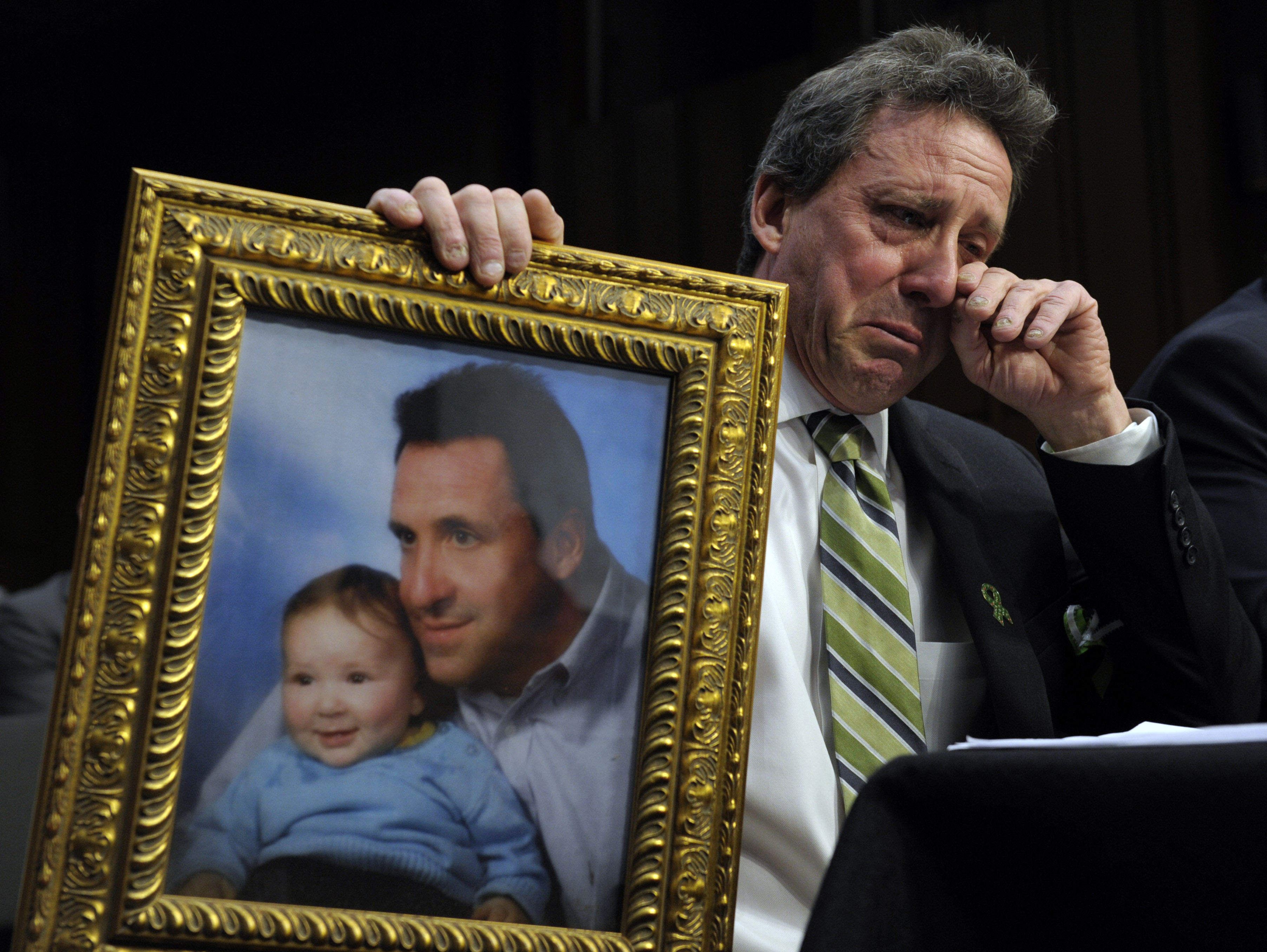The survivors took their places onstage from memory, because by now they knew exactly where to go. The shooting victims in wheelchairs entered first, rolling into the front row, wearing bracelets engraved with the words "Aurora," "Oak Creek" or "Virginia Tech." Behind them stood a dozen people in black T-shirts who held memorial photos of relatives killed in America's most infamous mass shootings. In the far back were politicians holding copies of their speeches and gun-control activists waving signs, including one that read: "How many more victims does it take?"
Minutes before the rally began, two of the speakers walked across the lawn of the U.S. Capitol toward the stage. One of them, Stephen Barton, had been shot at a midnight movie premiere in Aurora, Colorado, and he had deferred a teaching position in Russia so he could recover from having 16 shotgun pellets surgically removed from his arm, neck and face. The other, Carlee Soto, was taking a semester off from community college because the desks reminded her of the first-grade classroom in Newtown, Connecticut, where her sister had taught.
"We have to make people understand what it feels like," Barton told her.



